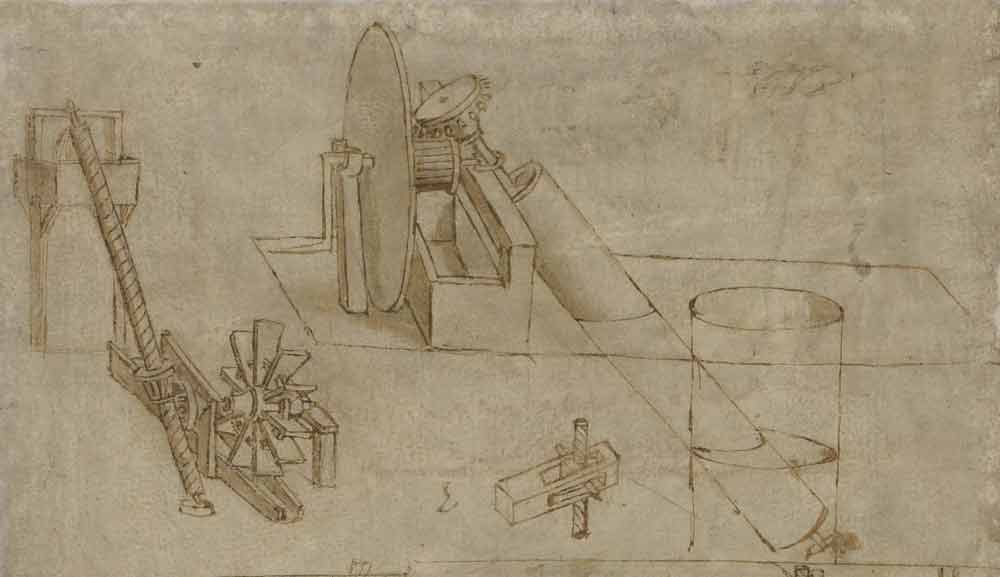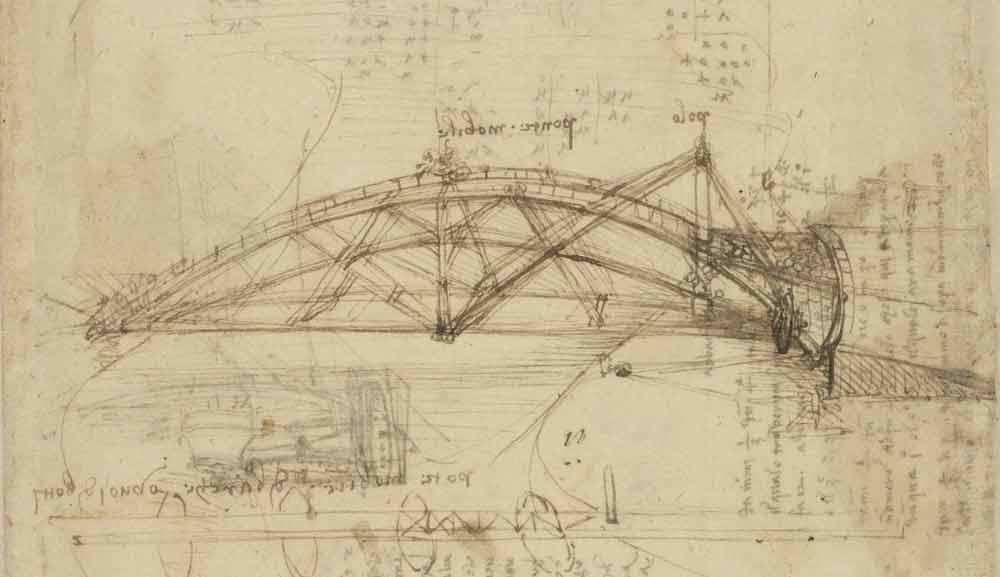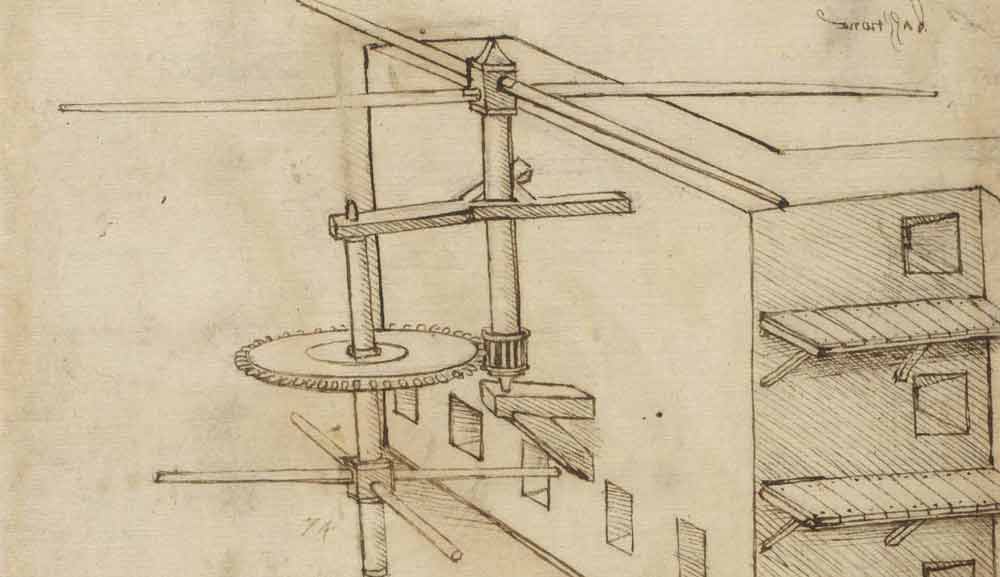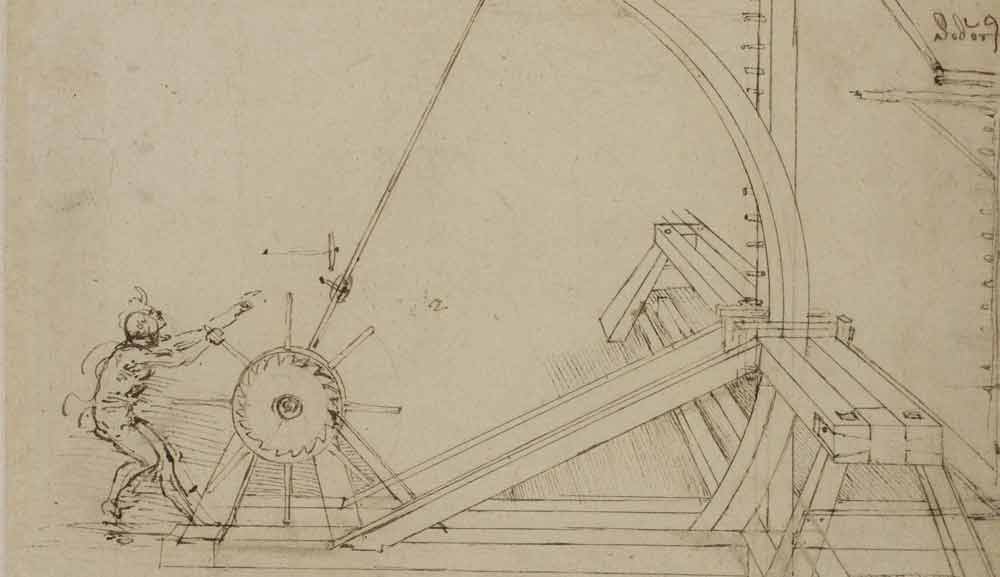In Da Vinci: Shaping the Future, Technology is the fourth section of the exhibition, and is explored in a wide range of specially constructed models, commissioned especially for the exhibition, copies of pages of the Codex Atlanticus, interactive exhibits, films, and hands-on education displays.
Leonardo da Vinci is revered for his technological ingenuity, and is considered one of the great engineering innovators in history. He believed technology should be attractive, efficient, and buildable. He considered technology to be an organic extension of humanity. As with architectural buildings, da Vinci approached machines as organisms, interested in how each component worked together, and how they could be optimised to create an efficient whole. Technology was a vital part of his life and professional practice. Acting as a civic and mechanical engineer at the court of Milan, da Vinci created studies for dozens of mechanical tools, derived from his observations of construction sites or battlefields. These studies for technologies and tools remain influential to this day.
The legacy of da Vinci’s approach to technology is presented in a moving image installation by Semiconductor, which shows how technology has enabled us to radically extend our capacity for observation - even beyond the earth.
Leonardo da Vinci is revered for his technological ingenuity, and is considered one of the great engineering innovators in history. He believed technology should be attractive, efficient, and buildable. He considered technology to be an organic extension of humanity. As with architectural buildings, da Vinci approached machines as organisms, interested in how each component worked together, and how they could be optimised to create an efficient whole. Technology was a vital part of his life and professional practice. Acting as a civic and mechanical engineer at the court of Milan, da Vinci created studies for dozens of mechanical tools, derived from his observations of construction sites or battlefields. These studies for technologies and tools remain influential to this day.
The legacy of da Vinci’s approach to technology is presented in a moving image installation by Semiconductor, which shows how technology has enabled us to radically extend our capacity for observation - even beyond the earth.
- Technology
- Technology Image gallery
- Video
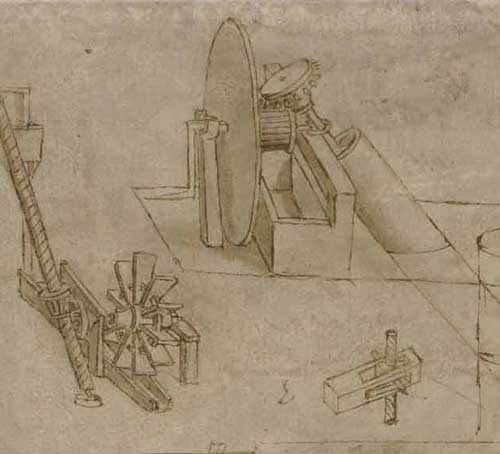
Civic Tools
Da Vinci’s projects for civic tools were as beautiful as they were functional. He attentively studied existing machines and used first-hand experience to understand their working principles, and to conceive new solutions. For him, theory and practical concerns were always intertwined. The basic elements of the devices da Vinci designed were joints, gears, pulleys, levers and springs, all of which are reflected in the folios on display.
These tools were the products of da Vinci's understanding and use of the forces of nature to solve and improve the practices of daily life. In their conception, da Vinci applied his knowledge of projectile motion, the mechanics of the body, and mathematical proportions.
These tools were the products of da Vinci's understanding and use of the forces of nature to solve and improve the practices of daily life. In their conception, da Vinci applied his knowledge of projectile motion, the mechanics of the body, and mathematical proportions.
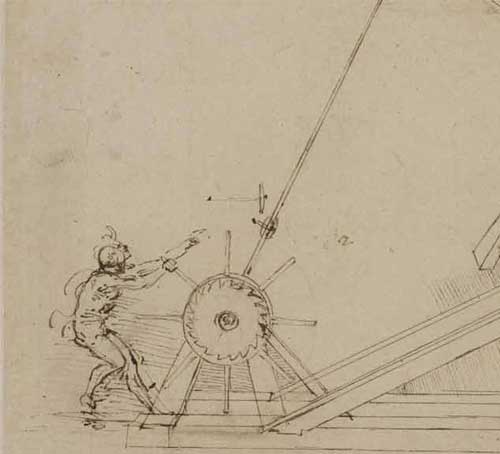
Military Arts
During the Renaissance, Italy was constantly in a state of war as the country’s city-states battled for power. Though da Vinci was a humanist and pacifist who detested war and harming people and animals, his patron, Ludovico Sforza (il Moro), spent as much as 75% of his budget on war. As a result, da Vinci was asked to engage in many projects on military strategy, and create studies for offensive and defensive military machines.
In fact, when da Vinci wrote to il Moro to seek his patronage, he emphasised his talents in engineering and military arts. He seemed to have an interest in broadening his experience in the military arts with the intention to produce a military treatise: a written and illustrated explanation of his military strategies and machines. This is likely because the publication of such a treatise, as was the tradition at the time, would have elevated da Vinci’s status from ‘artist-engineer’ to ‘master of several liberal arts’.
Though he was working in the realm of military and warfare, da Vinci did not lose sight of his ideals of beauty and harmony. He approached military machines as organisms which he designed according to perfect proportions.
In fact, when da Vinci wrote to il Moro to seek his patronage, he emphasised his talents in engineering and military arts. He seemed to have an interest in broadening his experience in the military arts with the intention to produce a military treatise: a written and illustrated explanation of his military strategies and machines. This is likely because the publication of such a treatise, as was the tradition at the time, would have elevated da Vinci’s status from ‘artist-engineer’ to ‘master of several liberal arts’.
Though he was working in the realm of military and warfare, da Vinci did not lose sight of his ideals of beauty and harmony. He approached military machines as organisms which he designed according to perfect proportions.

